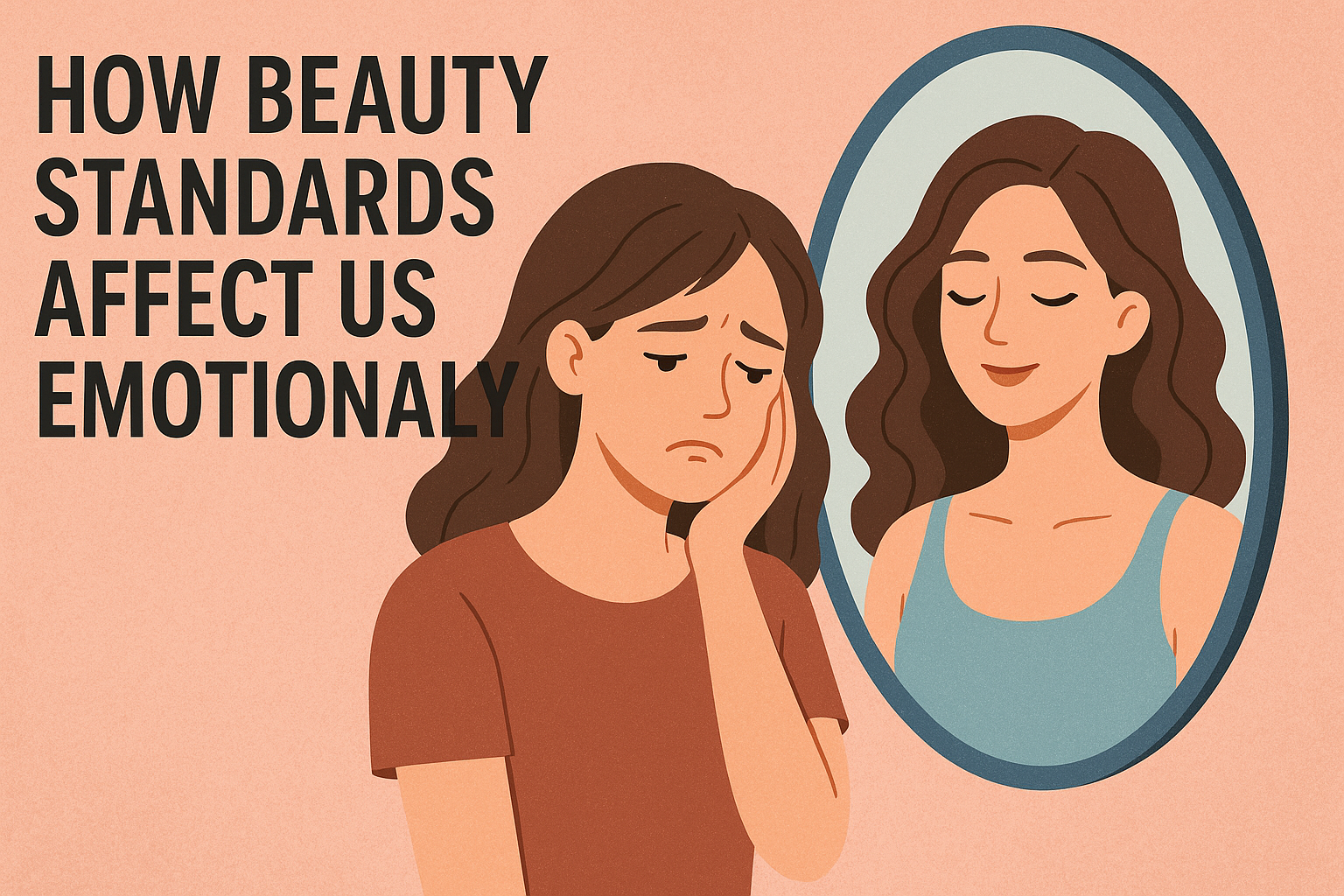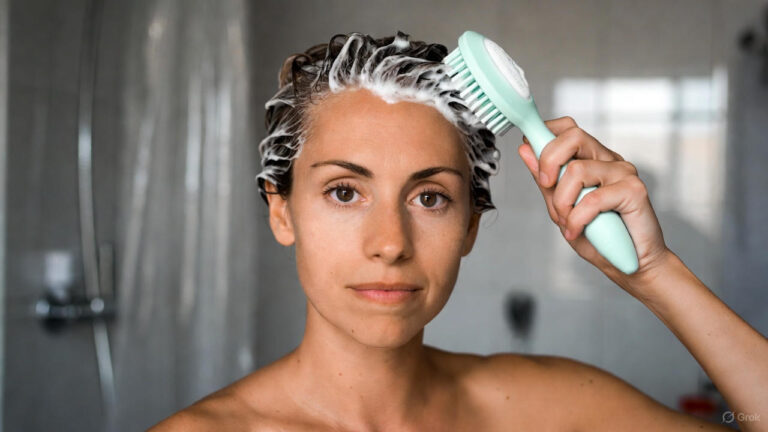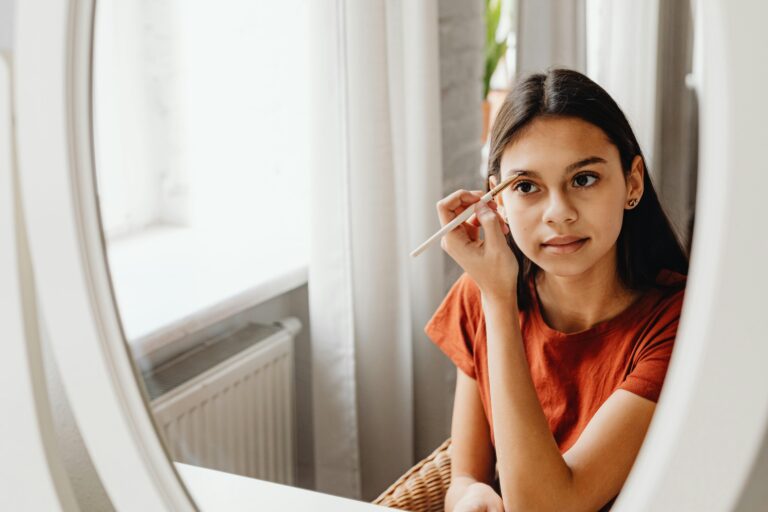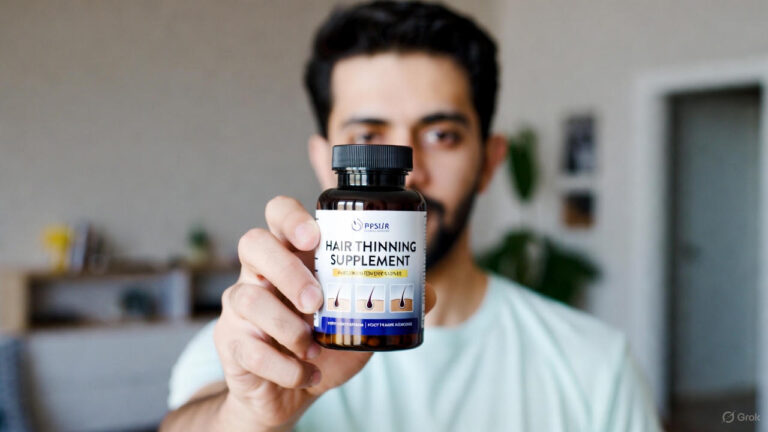How beauty standards affect us emotionally isn’t just a philosophical question. It’s something you feel every time you scroll social media or glance at a magazine cover. The pressure to look a certain way seeps into how you think, behave, and even how you treat yourself.
You might notice a friend glowing with confidence after a new haircut. Or someone hiding from photos after weight gain. These reactions aren’t random. They’re emotional responses to society’s ever-changing ideas of “beauty.” Understanding how these standards impact your emotions can help you untangle pressure from personal preference.
The Psychology Behind Beauty Standards
Humans are wired to respond to appearance. Research shows that symmetry, health cues, and cultural signals influence attraction. But when those preferences become rigid standards, they start to shape emotions in less healthy ways.
You may feel a boost of self-esteem when you meet a standard, like clear skin or a trendy hairstyle. But the flip side is rough. Falling short—often through no fault of your own—can spark anxiety, shame, or even depression.
This emotional swing isn’t just vanity. It taps into belonging. You want to feel accepted, admired, or loved. When beauty feels like the ticket to those needs, emotions naturally follow the highs and lows of external approval.
Media and Its Emotional Weight
Movies, ads, and now influencers flood you with images of what’s “in.” It’s like a constant slideshow of what you should aim for. Even if you know it’s curated or filtered, it still plants seeds of comparison.
Think about scrolling through a feed filled with perfect skin, tiny waists, or sculpted jaws. For some, it’s inspiring. For many, it’s exhausting. You start to measure your worth in likes, comments, or how closely you resemble a trending look.
Case studies back this up. Studies from the American Psychological Association found direct links between exposure to idealized beauty and body dissatisfaction. The emotional weight isn’t imaginary—it’s measurable.
Cultural Expectations and Identity
Beauty standards vary, but the emotional pressure is universal. In some cultures, pale skin signals status. In others, fuller figures are praised. The common thread? A moving target you feel compelled to chase.
This chase affects identity. Maybe you grew up in a community valuing natural hair, but media praised straight hair. That gap between personal identity and external standards can feel like a tug-of-war. You might suppress traits that feel authentic just to blend in.
That internal conflict chips away at emotional health. You’re torn between belonging and self-expression. Both matter deeply, and when they clash, the emotional toll is real.
Relationships and Emotional Strain
Beauty ideals don’t just affect how you see yourself. They seep into relationships. You may feel pressure to “look good” for a partner, or even fear rejection if you change physically.
Partners, friends, or family may unconsciously reinforce standards. Compliments tied to weight loss or youthful looks can feed the idea that love or respect is conditional. That creates emotional fragility—you feel valued for what changes, not for who you are.
On the flip side, supportive relationships can buffer the damage. When people close to you celebrate your uniqueness, emotional resilience grows. It proves that beauty is subjective and that connection isn’t limited to appearance
Career and Confidence
Workplaces aren’t immune. Certain industries—like entertainment, hospitality, or fashion—tie professional success to appearance. But even in traditional fields, studies show that attractiveness bias can sway hiring or promotion decisions.
Knowing this subconsciously raises emotional stakes. You might worry that a breakout, gray hair, or weight change could cost opportunities. That stress compounds daily pressures, feeding anxiety or low confidence.
Emotional fallout here is tricky. You can start conflating professional worth with physical appearance. That’s a heavy burden, especially when skills and contributions matter far more in the long run.
Technology, Filters, and the New Emotional Battleground
Social media filters create idealized versions of faces. They smooth, sculpt, and brighten. Fun at first, they can turn into quiet traps. You see your “improved” version so often that reality feels lacking.
Teen mental health experts warn about “filter dysmorphia,” where people seek surgery to look like their filtered selves. That’s a direct emotional impact, turning digital play into real-world distress.
It’s not all bad. Online communities also challenge narrow standards. Movements for body positivity, aging with pride, and celebrating diverse features prove emotional harm isn’t inevitable. Awareness is growing.
Healing from Emotional Harm
Here’s the hopeful part: emotional impact isn’t permanent. You can reframe how you see beauty, and that starts with awareness.
First, separate trend from truth. Beauty standards shift constantly. What’s “flawed” today might be praised tomorrow. Remind yourself that permanence lies in character, skills, and kindness.
Second, curate inputs. Follow social media accounts celebrating real bodies, varied features, and honest stories. Over time, your emotional baseline shifts. Comparison loses its edge.
Third, practice self-compassion. This isn’t fluffy advice. Studies link self-kindness to reduced anxiety and depression. Talking to yourself like a friend rebuilds confidence from the inside.
Finally, seek support if emotional harm runs deep. Therapists specializing in body image or self-esteem offer tools to untangle decades of cultural pressure. It’s not weakness—it’s strategy.
Conclusion
How beauty standards affect us emotionally is a reminder: beauty is powerful, but not always kind. Awareness, compassion, and diverse voices can shift how we feel—and maybe how the world defines beauty next.
FAQs
1. Why do beauty standards affect us emotionally?
They influence belonging, self-worth, and how others treat us. That emotional mix is hard to ignore.
2. Are emotional effects of beauty standards the same worldwide?
No. Standards vary by culture, but the pressure and emotional weight show up almost everywhere.
3. Can changing beauty standards improve mental health?
Yes, broader and more inclusive standards can reduce pressure. But deep change often starts individually.
4. How can I protect myself emotionally from harmful standards?
Limit exposure to unrealistic images, focus on health over looks, and surround yourself with supportive people.
5. Are younger generations less affected emotionally by beauty standards?
They face similar pressure, but they also drive inclusivity. Awareness gives them more tools, though challenges remain.



